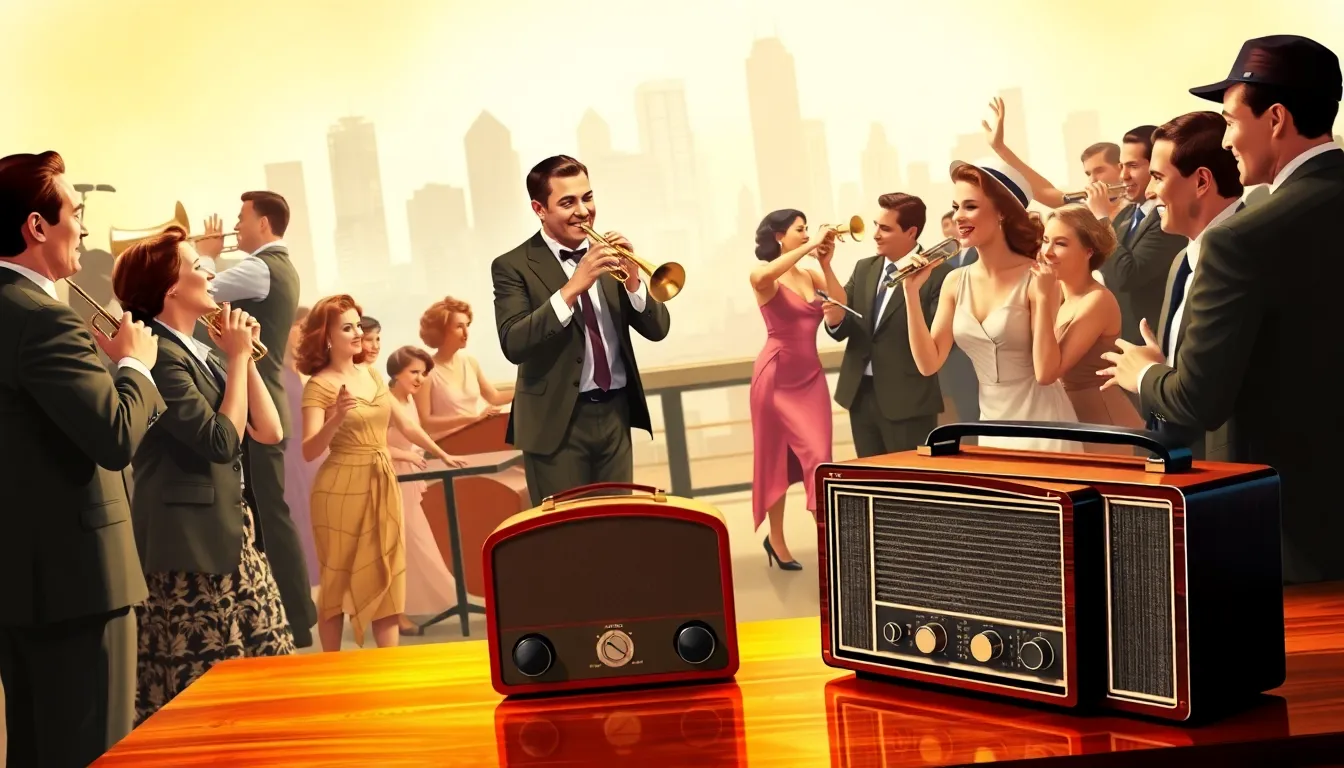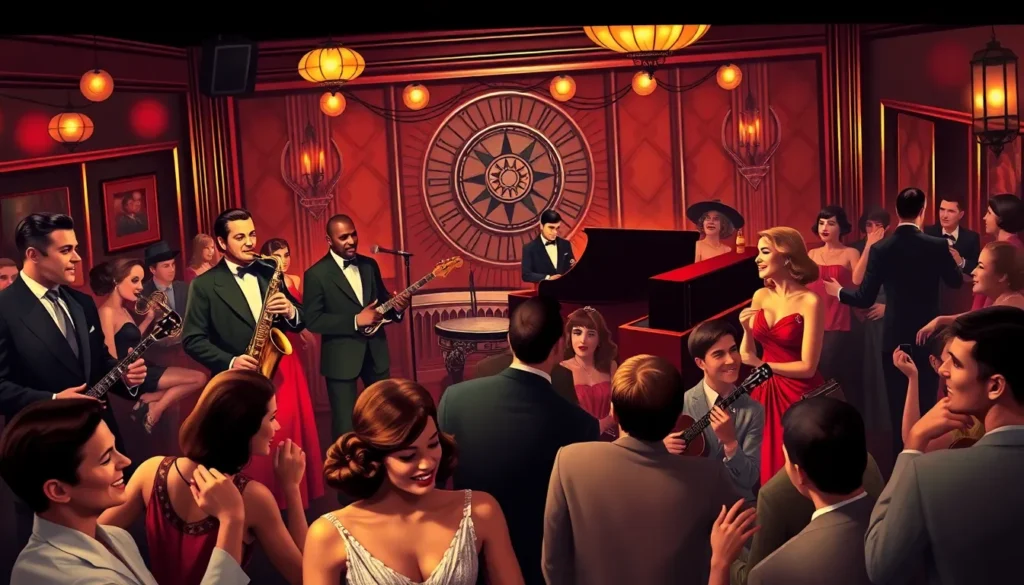Table of Contents
ToggleThe 1930s might just be one of the quirkiest decades in American history. Picture it: a world grappling with the Great Depression, yet somehow, pop culture flourished like a resilient weed in a cracked sidewalk. If one were to ask whether the economy had everyone down in the dumps, the answer would be a resounding no, at least not in the entertainment realm. From the silver screens illuminating the bleakness of daily life to the rhythmic jazz filling the smoky bars, pop culture during this decade not only survived but thrived. Put your fedoras on and get ready to dig into the dazzling world of 1930s pop culture, where every note, stitch, and film served as a temporary escape from the hardships outside.
Major Trends in Entertainment

Film and Cinema: The Golden Age
The 1930s witnessed the blossoming of cinema into what many consider its Golden Age. This was the era when Hollywood truly came into its own, serving up memorable flicks that defined the decade. The likes of “Gone with the Wind” and “The Wizard of Oz” captured hearts, providing audiences with a much-needed escape. Directors such as Frank Capra dominated the box office, blending poignant narratives with sparkling humor. As talkies gained popularity, audiences plunged into a new world of sound, laughter, and emotion, all captured in stunning Technicolor.
Radio: The Voice of the Nation
While film shone brightly, radio served as the faithful companion to households across the nation. Families huddled around their receivers to catch the latest news, entertainment, and music. This was the heyday of radio dramas, with shows like “The Shadow” captivating imaginations every week. It wasn’t just about news. Comedy programs and variety shows brought laughter into homes, forging a unique bond among listeners. Radio, with its rich tapestry of sounds, became the heartbeat of the nation, creating community and connection in ways previously unimaginable.
Music: The Rise of Jazz and Swing
What about the musical landscape of the 1930s? It was brimming with innovation. Jazz and swing took center stage, transcending mere genre constraints to become a cultural movement. Artists like Duke Ellington and Benny Goodman made it possible for the masses to groove, breaking down social barriers one note at a time. Speakeasies and dance halls filled with lively rhythms, making music an integral part of social gatherings. The birth of swing music transformed nightlife, allowing everyone to join the dance floor and forget their troubles.
Fashion and Style in the 1930s
Influential Designers and Trends
Fashion in the 1930s was a blend of practicality and daring flair. Designers like Elsa Schiaparelli and Coco Chanel challenged conventions, championing both femininity and empowerment. The silhouette of the time was marked by elegant lines, with women’s garments draping beautifully to accentuate curves through bias cut techniques. Men, too, found their style evolving with the introduction of the double-breasted suit and hats that became symbols of sophistication. Fashion wasn’t just about fabric: it was about identity, a reflection of a people yearning for hope and vitality in tough times.
Iconic Styles and Influences
The influence of Hollywood couldn’t be underestimated when it came to fashion. Stars like Greta Garbo and Clark Gable became style icons, setting trends that were eagerly followed by the public. Elegant evening gowns dazzled at every gala, while casual wear embraced comfort without sacrificing style. The influence of art deco also seeped into fashion, with bold geometric patterns and luxurious materials creating a sense of opulence. The very clothes people wore became intertwined with their dreams, aspirations, and even their reality.
The Impact of the Great Depression
Cultural Reflections in Art and Literature
The Great Depression wasn’t merely an economic crisis: it charged the creative engines of artists and writers alike. Literature from this decade, such as John Steinbeck’s “The Grapes of Wrath,” provided sharp social commentary, highlighting struggles, resilience, and the search for dignity amidst despair. Meanwhile, visual artists like Dorothea Lange captured hauntingly beautiful photographs that brought the reality of the era to life, ensuring that no one could ignore the plight of their fellow Americans.
American Identity and Social Commentary
In a time defined by hardship, the cultural scene became a platform for expressing hope and resilience. Plays and films focused on the American experience, examining class struggles and social inequities. Entertainers used their art as a shield against the chaos, promoting a sense of unity. The power of storytelling emerged, showcasing the strength of community in solving societal issues. Pop culture became a powerful voice for change, helping to forge a new American identity in the face of adversity.




